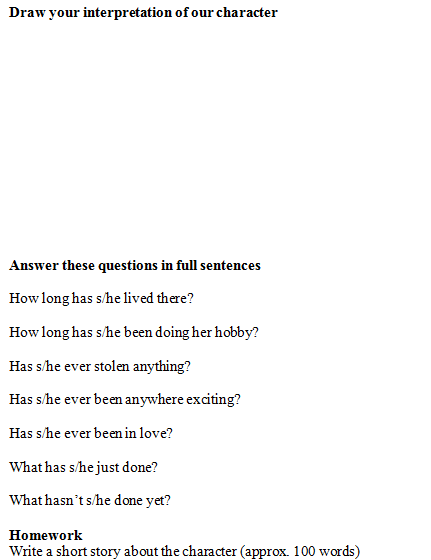I finally completed my Diploma application today! I say, “finally” as although there wasn’t that much to it, it’s been on my to do list for quite some time. It was actually the written task which was causing me problems, as it was an interesting topic to discuss, but there were a number of things which had to be included, all within a 500-word limit. Anyoldwho, now it’s done, so happy reading!
Grammar should be implicit, not explicit. Discuss.
With any topic on the methodology of teaching, there are a number of factors to consider when asking which is the ‘best’ way to teach. In the case of teaching grammar, it is important to consider the age of the students, their level and the learning environment. Young learners are much more accepting of grammar than adults, who often ask for rules and clear explanations of structures. And, in my experience, higher level adults don’t feel the need to have such clear explanations as they are more content to use a new structure through trial and error in order to ascertain when and how it can be used.
A clear argument against teaching grammar explicitly is that, as I’ve said before, low-level adult students often ask for clear explanations of structures and uses. However, this can be counter-productive as for every rule we give, there are often a number of exceptions or cases in which the rule doesn’t apply. I recently made a worksheet to practise simple present questions with an A1 adult group and included the question, “Is Marinela’s car blue?” This led to a number of confused faces and concerns over why the adjective came after the noun when I’d always told them it should come before.
Lewis (1986) argues that teachers should not feel that one of their key functions is “explaining grammar”. He says instead that you should provide answers to students’ questions. In this way, teaching grammar implicitly gives students the opportunity to discover patterns for themselves, taking the focus away from the teacher, who may inadvertently supply a ‘rule’ which has a number of exceptions, and putting it on the student who has learnt to use a certain structure in a certain situation.
I also believe that the learning environment is a factor to consider – students learning a language in a monolingual class are perhaps more likely to be shown cases where the second language is similar or different to their own, which can in turn both help and hinder. Klein (1986) outlines the Contrastive Hypothesis of second language learning and he notes that where there are corresponding structures between a second and previously learnt language there is “positive transfer”; whereas contrasting structures create “negative transfer” or “interference” between the two languages. This again highlights the need for the teacher to be a facilitator of language learning – to be available to answer questions arising from structures rather than providing students with a hard-fast rule and an ever-growing list of exceptions.
In conclusion, I believe that adult learners should be given more opportunity in the classroom to discover grammar for themselves. Teachers should provide a number of examples so that learners are encouraged to find patterns and help them to define the grammar in a finite situation.
References:
Klein, Wolfgang – Second Language Acquisition (Cambridge University Press, 1986)
Lewis, Michael – The English Verb (Language Teaching Publications, 1986)

